Discover 10 hidden attractions, cool sights, and unusual things to do in Ayot St Lawrence (United Kingdom). Don't miss out on these must-see attractions: Shaw's Corner, Welwyn Roman Baths, and New St Lawrence Church. Also, be sure to include Old St Lawrence Church in your itinerary.
Below, you can find the list of the most amazing places you should visit in Ayot St Lawrence (England).
Table of Contents
Shaw's Corner
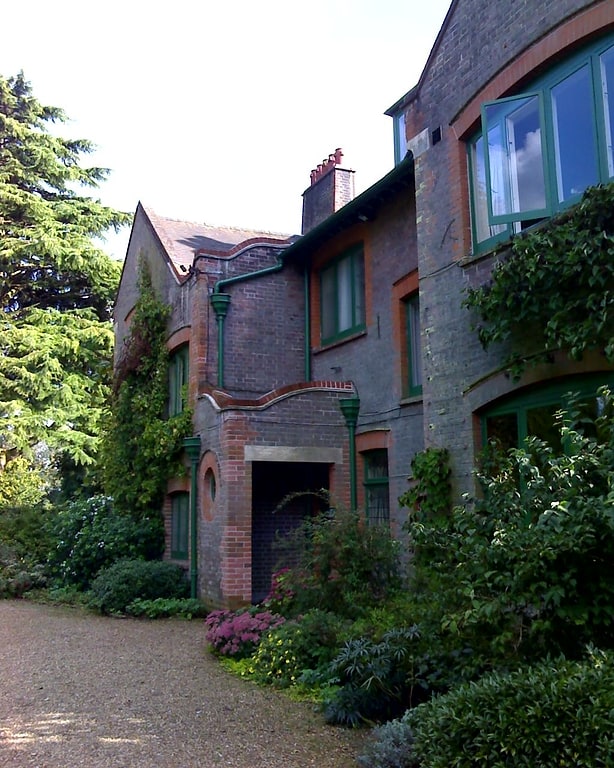
Tourist attraction in England. Shaw's Corner was the primary residence of the renowned Irish playwright George Bernard Shaw; it is now a National Trust property open to the public as a writer's house museum. Inside the house, the rooms remain much as Shaw left them, and the garden and Shaw's writing hut can also be visited. The house is an Edwardian Arts and Crafts-influenced structure situated in the small village of Ayot St Lawrence, in Hertfordshire, England. It is 6 miles from Welwyn Garden City and 5 miles from Harpenden.
Built as the new rectory for the village during 1902, the house was the home of playwright George Bernard Shaw from 1906 until his death in 1950. It was designed by local architects and local materials were used in its construction. The Church of England decided that the house was too large for the size of the parish, and let it instead. Shaw and his wife Charlotte Payne-Townshend relocated in 1906, and eventually bought the house and its land in 1920, paying £6,220. At the same time the garden was extended and Shaw bought land from his friend Apsley Cherry-Garrard, bringing the total to 1.4 hectares (3.5 acres).
Shaw is known to have written many of his major works in a secluded, home-built revolving hut located at the bottom of his garden. The tiny structure of only 64 square feet (5.9 m2), was built on a central steel-pole frame with a circular track so that it could be rotated on its axis to follow the arc of the Sun's light during the day. Shaw dubbed the hut "London", so that unwanted visitors could be told he was away "visiting the capital".
After Shaw's and his wife's deaths, their ashes were taken to Shaw's Corner, mixed and then scattered along footpaths and around the statue of Saint Joan in their garden.[1]
Address: Ayot St Lawrence, near Welwyn, AL6 9BX, Ayot St Lawrence
Welwyn Roman Baths
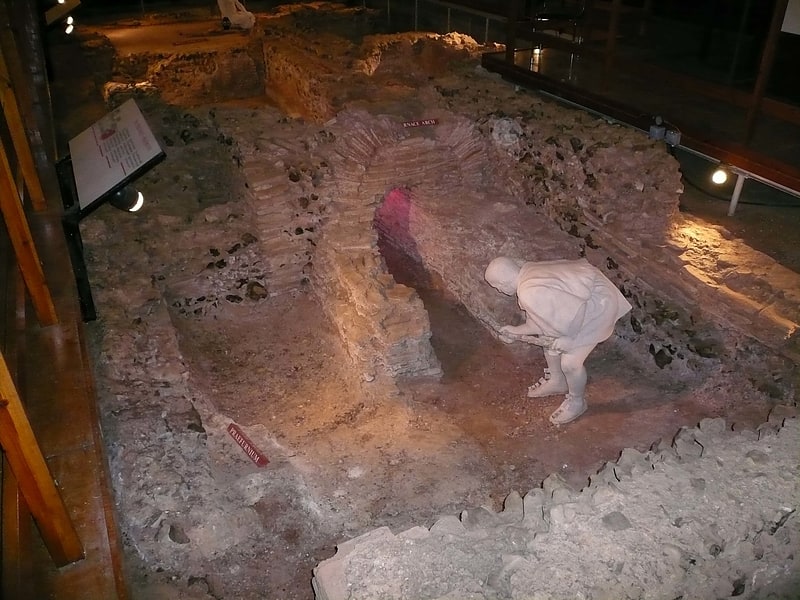
Museum in Welwyn, England. The Welwyn Roman Baths are a Roman ruin preserved under the A1 just north of modern-day Welwyn Garden City, Hertfordshire, England. The baths were a small part of the Dicket Mead villa, which was originally built in the 3rd century AD.
The village of Welwyn has been described as being the site of a Romano-British settlement, where a Roman road crossed the river Mimram. There was another Roman villa near Welwyn on the Lockleys estate.
The full extent of the Dicket Mead villa was never fully excavated prior to the construction of the motorway, but the baths were only one of at least four buildings in total. The complex was probably part of a farm. It has been speculated that it might have been at least in part the equivalent of a hotel, lying as it does near Roman roads.
The ruins were uncovered in 1960 by local archaeologist Tony Rook, and the baths were gradually uncovered over the following 10 years by excavation. Shortly after the excavation was completed, the Ministry of Transport announced the route of a new motorway, straight over the top of the excavation.[2]
Address: Welwyn By Pass Rd, AL6 9FG Welwyn
New St Lawrence Church
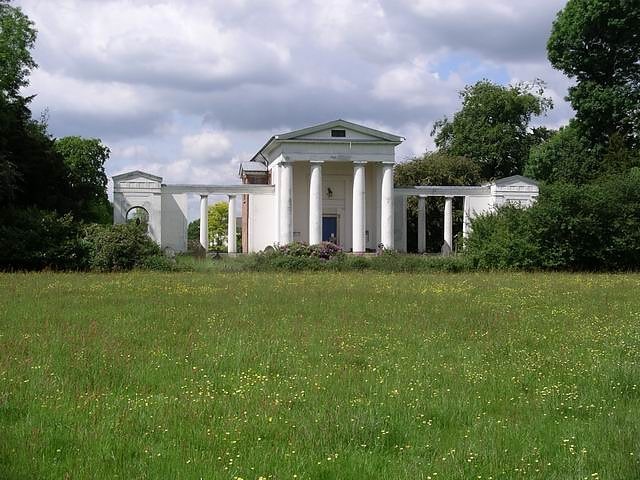
Church in England. St Lawrence Church is an eighteenth-century, neoclassical church in Ayot St Lawrence, Hertfordshire, England. It is also known as New St Lawrence Church to distinguish it from the ruined Old St Lawrence Church.[3]
Old St Lawrence Church
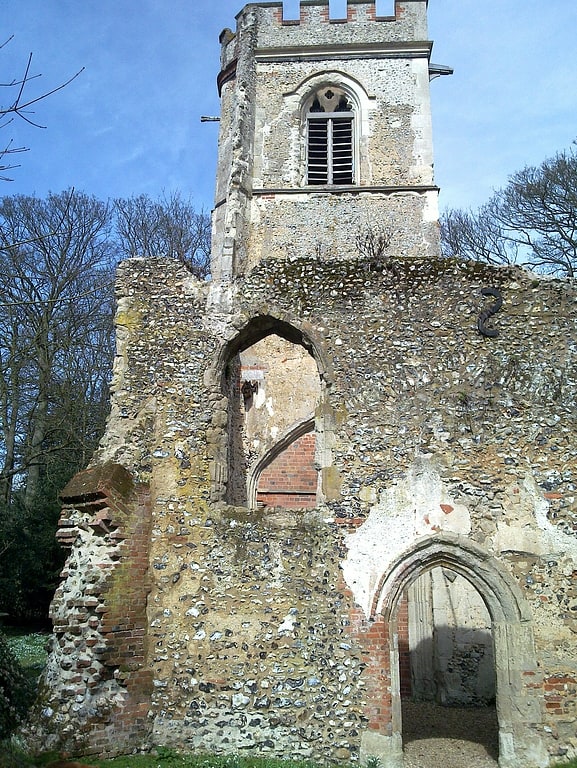
Old St Lawrence Church is a ruined building in Ayot St Lawrence, Hertfordshire, England. It is protected as a Grade II* listed building, and dates back to the 12th century.
The building was partially demolished in 1775 by Sir Lionel Lyde, 1st Baronet, who had acquired a country home, Ayot House, close by. It was replaced as the village's parish church by new St Lawrence Church, a neoclassical structure which Lyde had built on a site slightly further from his house.
The last baptism to take place at Old St Lawrence Church was on the 21st February 1773 for Susan George. New St Lawrence Church was consecrated in 1779.[4]
Nomansland
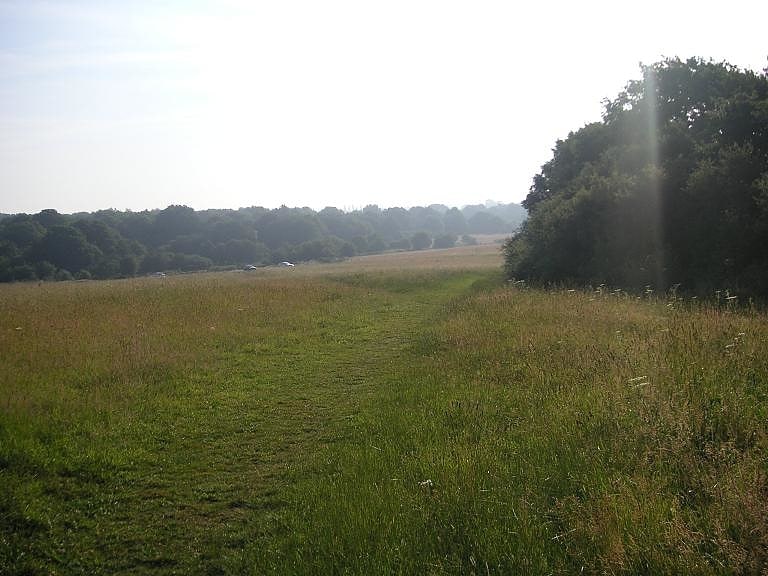
Nomansland Common is an area of common land in Hertfordshire, England to the south of Harpenden and the south-west of Wheathampstead
Geologically, the common is part of the Harpenden Dry Valley. In the last ice age a glacier dammed the river (which then flowed from Dunstable) south of Sandridge into St Albans Vale, creating a lake. When the dam melted and water drained away, it left the thin, stony soil still found on the common today. Nomansland has, throughout its history, been recognised for uniquely poor soil quality for agricultural purposes, although flint axe heads suggest that the common may have been cleared for grazing as long ago as 4000 BC. In World War II attempts were made to plant crops on the common, but the common yielded less than half of the produce per unit area as other arable land, despite heavy use of fertilisers. After the end of the war, the land was re-seeded as grass and returned to recreational use.[5]
Devil's Dyke
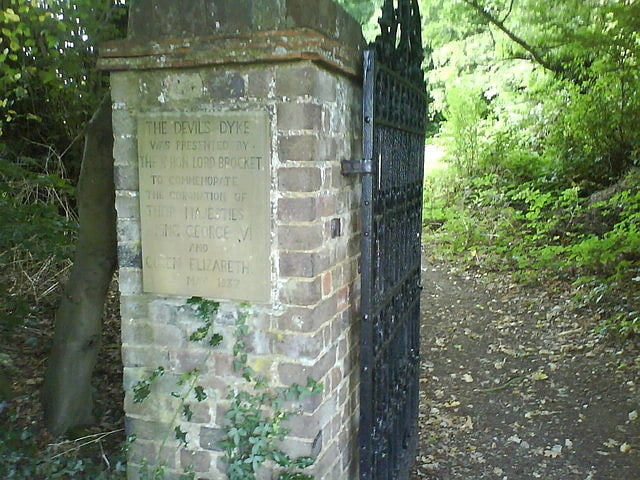
Devil's Dyke is the remains of a prehistoric defensive ditch which lies at the east side of the village of Wheathampstead, Hertfordshire, England. It is protected as a Scheduled Monument. It is generally agreed to have been part of the defences of an Iron Age settlement belonging to the Catuvellauni tribe of Ancient Britain. It has possible associations with Julius Caesar's second invasion of Britain[6]
Marshalls Heath
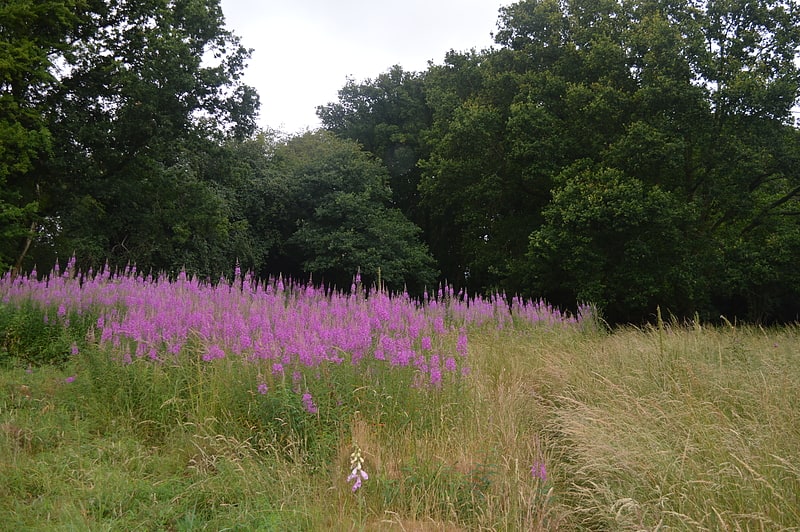
Marshalls Heath is a hamlet and a 4-hectare Local Nature Reserve in Wheathampstead parish, Hertfordshire, England. The nature reserve is owned by Wheathampstead Parish Council and managed by the council together with the Friends of Marshalls Heath. It was purchased from The Queen's College, Oxford, in 1966.
The site is acid heath on both sides of Marshalls Heath Lane. It is secondary woodland and scrub, but the many species recorded include forty on national lists of threatened species. Yellow hill ants are very common, and it is one of the key Hertfordshire sites for butterflies and moths. The site was managed by the Herts and Middlesex Wildlife Trust between 1972 and 1993, when the council terminated the agreement with the trust.[7]
Danesbury Park
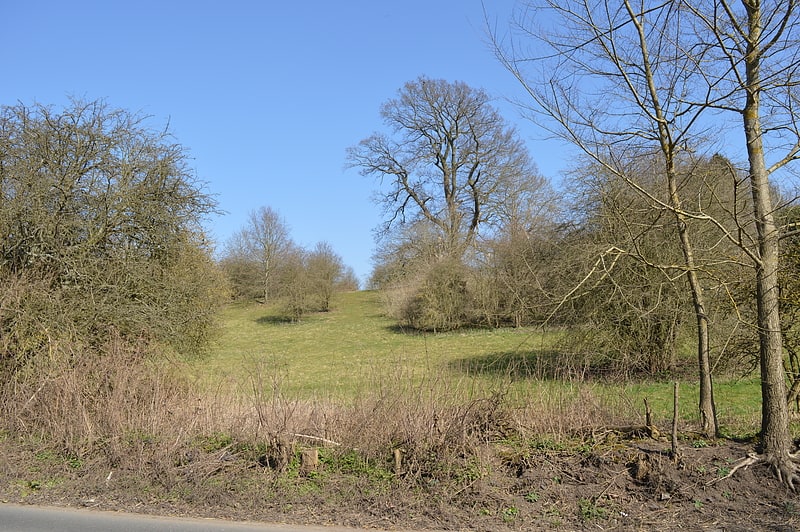
Park in Welwyn, England. Danesbury Park is a 24.5 hectare public park and Local Nature Reserve in Welwyn in Hertfordshire. It is owned and managed by Welwyn Hatfield Borough Council.
The site was formerly the park of Danesbury House, and it still has some large mature trees which are important to wildlife, especially bats, owls, insects and fungi. The park also has grassland with many varieties of flowering plants, and which is managed by rare-breed cattle, and occasionally by cutting.
There is access from a number of roads including Codicote Road. Another Local Nature Reserve, Singlers Marsh is on the other side of Codicote Road.[8]
Singlers Marsh
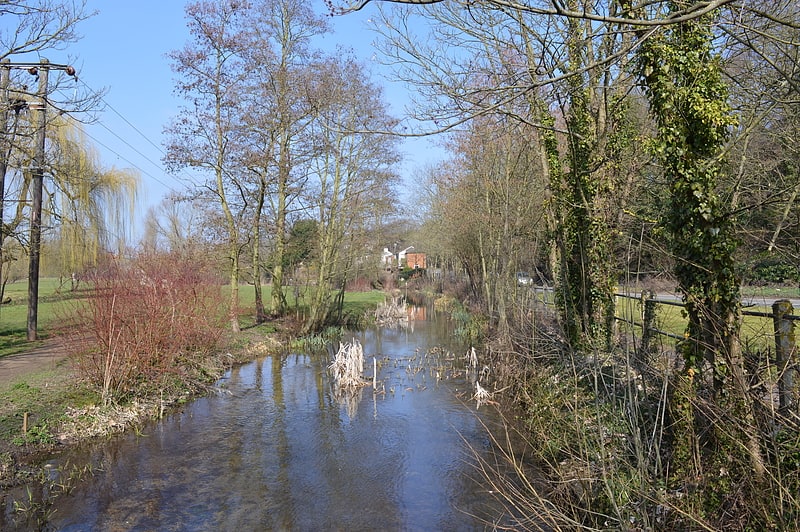
Park in Welwyn, England. Singlers Marsh is a 6.3 hectare Local Nature Reserve in Welwyn in Hertfordshire It is owned and managed by Welwyn Hatfield Borough Council.
The site is bordered by the River Mimram. It has grassland, which is managed by cattle grazing and cutting, and areas of willow scrub with some more mature trees. It provides a habitat for a wide range of insects and birds.
There is access by a kissing gate at the corner of Codicote Road and Fulling Mill Lane.[9]
Stocking Springs Wood
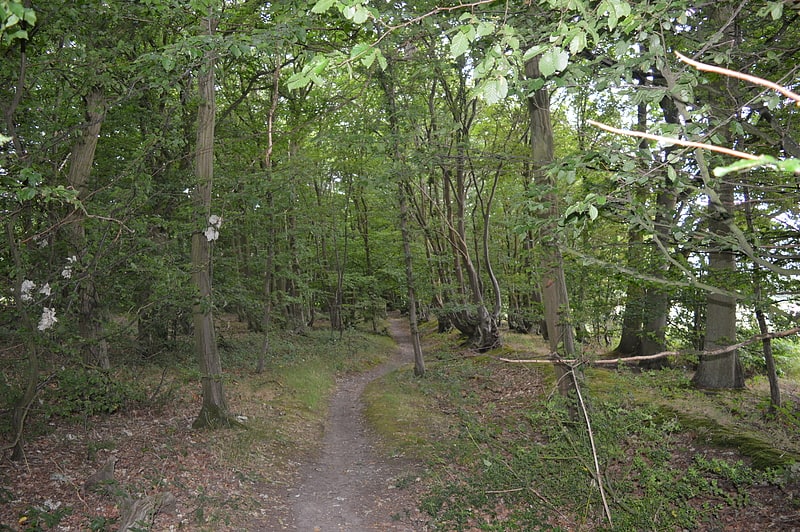
Nature preserve in Ayot St Lawrence, England. Stocking Springs Wood is a 1.1 hectare nature reserve between Ayot St Lawrence and Ayot St Peter in Welwyn Hatfield district in Hertfordshire. It is managed by the Herts and Middlesex Wildlife Trust.
The site is hornbeam woodland, and it is divided into sections which are coppiced every sixteen years. Older trees are gnarled in shape as a result. In spring there are bluebells and wild daffodils on the forest floor, and other plants such as wood anemone and early purple orchids are indicators that the woodland is ancient. Breeding birds include nuthatch, great spotted woodpecker and treecreepers.
There is access from Codicote Road west of Hill Farm Lane and from a bridleway from Ayot St Lawrence to Codicote Road.[10]